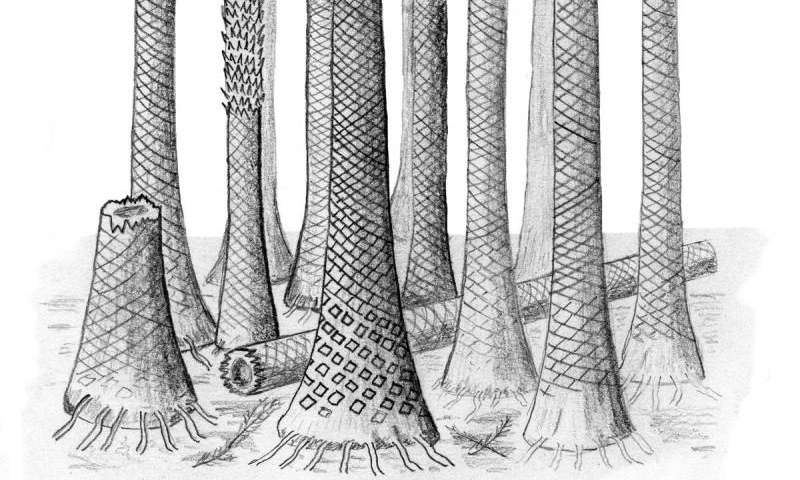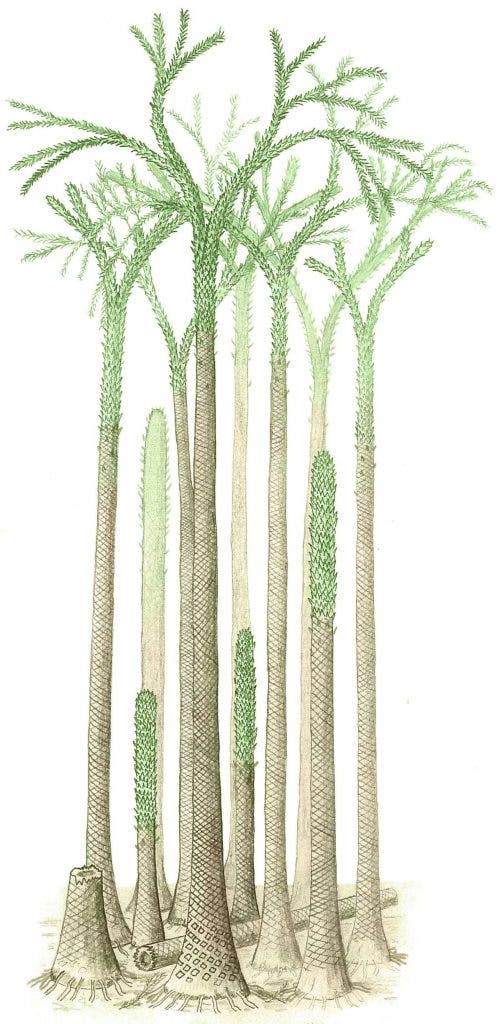Some 400 million years ago, during what’s called the late Devonian period, the planet went through a dramatic shift in climate. Over just a few million years, the CO2 levels in the atmosphere dropped 15-fold. Partially or mostly responsible for this phenomenal climate change event were the very first forests which evolved and started claiming the Earth. Until then, plants were less specialized and smaller. We know little of these troublesome times, but we’re learning along the way. The discovery of an ancient 380 million years forest in Norway will definitely help in this endeavor.
The fossil forests, complete with preserved stumps, were discovered by Dr Chris Berry of Cardiff University’s School of Earth and Ocean Science in Svalbard, a Norwegian archipelago situated in the Arctic Ocean. While the region is cold, barren and inhospitable, thinks looked a tad different 380 million years ago. Back then, the forest was located on the equator, before the tectonic plate drifted north by around 80° to its current position in the Arctic Ocean. It was a tropical forest.
[MORE] 300 million year old fossilized forest discovered under coal mine in China
“These fossil forests shows us what the vegetation and landscape were like on the equator 380 million years ago, as the first trees were beginning to appear on the Earth,” said Dr Berry.
Indeed, these were most interesting times. Life, plants or animals, were still in its infancy and evolution was experimenting like crazy. The vascular plant emerged around 400 million years ago and started Earth’s forest-building process during the Silurian geologic period. These were the first proto-tree which provided the link required for the first real trees to cross during the Devonian period. These learned to grow large and tall to support a vascular internal plumbing system. The first trees are believed to be the extinct Archaeopteris. The ones discovered in the Arctic by Dr. Berry are called lycopsids. It’s such trees that eventually turned into coal deposits, like the one in South Wales.
Berry and colleagues found the lycopsid forest was very dense, with trees spaced with only 20cm gaps. These trees grew up to 4 meters high, the researchers report in the journal Geology.
The oldest forest in the world is the Gilboa in upstate New York. Plants at Gilboa included ground cover, shrubs and medium-sized trees. One aborescent lycopsid, Lepidosigillaria, may have reached 5 m in height. Eospermatopteris, a tree of uncertain affinity, may have been 9 m tall. A common cladoxylopsid, Pseudosporochnus, was about 3 m tall.
The Gilboa and the Svalbard forests are two very important sites to study. These hold clues to the boom of new life forms that occurred during the late Devonian. This period can be likened to a reset. The climate was significantly shifted, and so was life which went through a mass extinction, only to come out with new experiments.
As a side note, Svalbard currently houses the world seed bank, also known as the “doomsday vault”. Open in 2008, the center houses seeds from virtually all the plants on the planet be them wild, domesticated or genetically modified. In case of a global calamity of any kind (nuclear war *cough), these seeds would be put to good use if a species is faced with extinction or research is required on such seeds. The first withdrawal was made this year by Syrian researchers which were in immediate need of new seeds in the aftermath of massive droughts and war. “It’s amazing that we’ve uncovered one of the very first forests in the very place that is now being used to preserve the Earth’s plant diversity,” continued Dr Berry.











